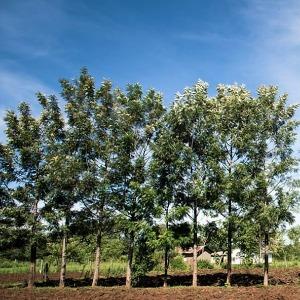
Youth for Trees Initiative (YOTI) by Finney and SDG Team
Please find below the
Finalist Evaluation
Judges'' comments
It is interesting that the projects puts an emphasis on tree growing rather than planting and by doing so, is likely to involve the different actors over the long term. The capacity building that can result from the implementation of the project is also a plus. And most importantly, by targeting the youth, this project is likely to have a durable and sustainable impact. However, it is not clear why exotic species, rather than native tree species, should be used, and if the potential risk of introducing/planting exotics have been assessed.
Semi-Finalist Evaluation
Judges'' ratings
| • | Novelty: | |
| • | Feasibility: | |
| • | Impact: | |
| • | Presentation: |
Judges'' comments
Youth initiatives need to be supported and championed, great to see the proposal. Can the proposal elaborate on how YOTI will be build capacities to engage with tree planting? As a platform for advocacy, it would be a great initiative, but restoration should come with some sort of guidance on how best to do so. A suggestion is that YOTI could also work as an organizing and convening platform for young Kenyans interested in learning more and building their capacities in the fields of landscape restoration, maybe even support some through YOTI to acquire grants and other funds for young Kenyans.
YOTI 's objective, to "help empower the people from these communities to restore the degraded landscapes and thus increase soil productivity to boost food production" is very clear and respond to a real challenge in drought-stricken regions. Mobilizing massively Kenyan students around large scale tree planting in arid zones in Kenya is an excellent and original idea and should be praised. However, the feasibility of the project is not completely clear: Why villagers would be interested in planting grevillea trees? What would be their interest beyond receiving seeds/seedlings? A theory of change has to be developed because planting tree does not depend only on the availability of seedlings of tree, it is much more complex, and the return for the producers is a very long term return. To go forward, it seems to me that this project would need to establish strong partnerships with experienced organizations, with proven success in development projects in the zone, to connect with the student force.
The project is very interesting but will need to be improved in technical terms. regarding the selection of the species to be used in restoration in ASAL of Kenya. The selection of the species needs to be undertaken with the local communities. I would encourage the proponent to have a participatory approach and conduct a consultation with the communities (future users of those trees) what they want as species (trees, shrubs and or grasses for livestock!). The best species would need to be native (as they are kown by communities and used for different uses and very well adapted to the local dryland environment). Further diversity is key, need to use different species as diversity is key for building resilient communities and landscapes. The proposal is suggesting the use of 2 exotic species. Diversity and adaptability are key. I would suggest that the proponent consults the Kenya Forestry Research Institute for technical support in this matter.
This is an interesting, but not unheard of proposal. The benefits of the YOTI would be excellent for the community and the youth if implemented correctly. The proposal could be further strengthened by explaining some of the key barriers that other schemes such as this have faced. Much of the idea relies on using passionate youth from the city, but in previous examples finding people who are able to stick with projects into the future has proven to be a significant challenge and one that this project would likely also face.
There are major gaps in how this project will be implemented. Depending on volunteer, university labour may be unreliable and difficult to achieve. Further, though the authors highlight the benefits of grenvillea trees for being adapted to arid conditions, they propose fruit trees which would need plenty of water. How will the project mobilise community members to invest their time and limited water resources to nature the trees, especially in their early years?
No comments have been posted.